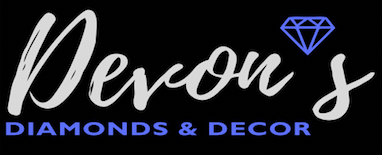
RUBY: July Birthstone
"The ruby encloses the brilliant red of the clouds of evening." - Charles Blanc

The ruby is the birthstone for July and the gem for the 15th and 40th anniversaries. The name “ruby” comes from rubeus, the Latin word for red. In ancient Sanskrit, ruby translated to ratnaraj, which meant “King of Gems.” These gems have been treasured throughout history.
RUBY FACTS AND HISTORY
Rubies were discovered over 2,000 years ago and traditionally are said to have protective powers. Early cultures treasured rubies for their similarity to the redness of the blood in their veins and believed that rubies held the power of life.
Historically, Asia has been the major producer of ruby gems. The Mogok Valley of Upper Burma, is famous for being the main source for the finest and rarest rubies. Although, there are many other sources including the United States, Thailand, Australia,Vietnam, Brazil, India and Africa. The origin of rubies affects their value.
Rubies have a hardness of 9 on the Mohs Scale of Mineral Hardness, making them the second hardest substance on Earth, after diamonds. Ruby is the red variety of the mineral corundum. The color comes from traces of chromium. All other color varieties of corundum are referred to as sapphire. A ruby’s vibrant red color and its hardness make it perfect for a stunning piece of jewelry. Rubies are often mixed with diamonds and/or other gemstones to make various types of jewelry.
In gemology, only four gems qualify for the "precious gems" category. These "precious gems" consist of the diamond, emerald, sapphire and the ruby. Rubies can command the highest per-carat price of any colored stone. This makes ruby one of the most important gems in the colored stone market.

RUBY QUALITIES
Given the lack of a standardized ruby grading system, it is important to know what to look for when purchasing ruby jewelry.
- Ruby Color - This is the most significant factor affecting a ruby’s value. The finest quality rubies are a pure, vibrant red to slightly purplish red and have vivid color saturation. A ruby's color must be neither too dark nor too light to be considered finest quality. If the color is too dark and will effect the stones brightness in a negative way. On the contrary, if the color is too light, the stone is considered a pink sapphire. The brightest and most valuable color of ruby is often a Burmese Ruby.
- Ruby Cut - Rubies are commonly fashioned as mixed cuts, which have brilliant-cut crowns and step-cut pavilions. With rubies, cut refers to how the stone is faceted, its dimensions, and its symmetry. When cutting rubies, there are four factors that gem cutters keep in mind:
-
Maximize color
-
Maximize carat weight
-
Minimize inclusions
-
Cut to the correct shape
- Ruby Clarity - Clarity is also extremely important for rubies. Small imperfections in the stones, called inclusions, decrease the clarity grade for rubies. Ruby value depends on how visible the inclusions are. If a ruby's inclusions affect its transparency or brilliance, they reduce the gem’s value significantly. To determine a grade, a gemologist will measure the size, location, number, color, and quality of the inclusions. Rubies without flaws are extremely rare so almost all rubies come with imperfections. It is important to keep that in mind when shopping for a ruby because there could be a possibility that it is synthetic or lab-created.
- Ruby Carat Weight - Carat weight works the same for rubies as it does for diamonds; the higher the carat weight, the more expensive the stone. Fine-quality rubies over one carat are very rare and price goes up significantly as size increases.
FUN FACT
The prices of fine-quality rubies have been breaking auction records. On May 12, 2015, a 25.59-carat ruby ring sold for $1,266,901 per carat, which is a total of $32.4 million. This set a new record at auction for a colored gemstone.
RUBY TREATMENT & CLEANING
It is important to know that 99% of rubies on the market today have undergone some type of treatment to improve color or clarity. The most common treatment performed on rubies is heating. The rubies are heated to extreme temperatures above 1750 degrees. Heat treatment can intensify a rubies color making it more "red". Another benefit of heat treatment is that it can dissolve any rutile inclusions, making them less visible when looking into the stone. For cleaning purposes, warm soapy water is always safe. Ultrasonic and steam cleaners are usually safe for untreated, heat-treated, and lattice diffusion treated stones.
THE IMPORTANCE OF RUBY CERTIFICATION
Often times when purchasing a fine quality ruby it will be accompanied by a certificate. There are countless laboratories that grade gemstones some of which are good and some not so good. G.I.A (Gemology Institute Of America) is known as one of the top labs in the world who grade precious gemstones. Two other very respected laboratories that grade only colored stones (rubies, sapphires & emeralds) are G.R.S (Gem Research Swiss-Lab) and AGL (American Gemological Laboratories).
\When looking over a lab report (certificate) you can trust, remember that origin is a very important factor as well as treatment, both of which should be indicated on the certificate (lab report). We do not recommend purchasing a larger fine ruby without a TRUSTED lab report! There has been many instances of innocent victims being fooled by bogus lab reports claiming false information.

RUBY JEWELRY IN BOCA RATON
Devon's Diamonds & Decor, your local Boca Raton jeweler, offers ruby necklaces, ruby pendants, ruby bracelets, ruby eternity bands, ruby earrings, and more! Visit our jewelry store in Boca Raton today.

